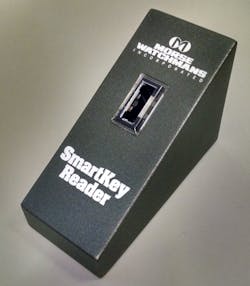Morse Watchmans focuses on technology integrations at ASIS 2015
Keeping tabs on keys may not be at the top of the list of things that security managers lose sleep over at night, but make no mistake, in certain applications it is absolutely mission critical. And with the push towards ease of integration that has permeated throughout the security industry in recent years, it is also paramount that key control solutions be able to communicate with access control systems already in place at the facilities where they are installed.
This trend has certainly not gone unnoticed at Morse Watchmans, which specializes in providing key management solutions. At this year’s ASIS conference in Anaheim, Calif., the company is showcasing some of its integration modules that it has developed over the past several years which are designed to enable compatibility between the company’s key control cabinets and some of the leading access control platforms in the industry.
“We’ve made some changes (to the modules), we’ve brought them up to date and the main ones we are showing are for Lenel, Software House and also Honeywell’s ProWatch,” said Joe Granitto, Director of Technology Solutions for Morse Watchmans. “We’re always adding to our software, we’re always changing it to give end-users what they want, so we spend quite a bit of time doing that. As the product grows, as it gets out into the field and as more and more users start to put it on their network, we get new requests from clients about what they expect and what they want and we do our best to meet those needs.”
As the industry has evolved, Granitto said that they’ve found an increasing number of their clients who want to have the ability to incorporate their KeyWatcher cabinets into their larger access control system.
“It started off small, but as we’ve moved on it’s getting bigger and bigger, especially with large corporations,” he added. “Smaller clients aren’t typically looking for it, but when we get into some of the Fortune 500 companies, and some not even quite to that level, they all want this. We want to really get this out there and let them know that we have this capability so they’re educated about it.”
“It’s been a trend that really started internationally and that trend is now moving to North America,” said Steve Soares, KeyWatcher Product Manager at Morse Watchmans. “Really the whole idea behind these integrations is to give users a single point from which they can manage their users. If they have a new employee come in, they have to login to the access control system, assign them a badge to give them access to different places within the facility and our integration with these systems allows them to also have that user’s information pushed into the KeyWatcher system so that it is also aware of the user’s ability to take and return keys. It takes away the need for somebody to need to go and add a person to two or three different systems within their building.”
Among the products the company is featuring at this year’s show is their KeyWatcher Touch cabinet along with the SmartKey reader, which enables users to enroll keys at their computer rather than having to walk to the cabinet itself.
“For larger installations, let’s say auto dealerships, for example, when they get a new vehicle in they can quickly put their key in one of our SmartKey tags and they can enroll it right at their computer and then they could take it down to the proper cabinet whenever they choose,” said Granitto. “That’s also good for identifying the keys as well. If somebody takes it off the floor and they don’t know what it is, they can take it, place it in this device and it will tell them what it is.”
Although key management solutions started out as smaller systems without a lot of bells and whistles, Granitto said they have evolved to a point where it is all about the functionality they can offer to the user.
“For all of the different markets and industries, they all have their own special way that they want to deal with keys. That becomes a challenge for us because we need to be upgrading and modifying our software to meet these needs,” he said.
About the Author
Joel Griffin
Editor-in-Chief, SecurityInfoWatch.com
Joel Griffin is the Editor-in-Chief of SecurityInfoWatch.com, a business-to-business news website published by Endeavor Business Media that covers all aspects of the physical security industry. Joel has covered the security industry since May 2008 when he first joined the site as assistant editor. Prior to SecurityInfoWatch, Joel worked as a staff reporter for two years at the Newton Citizen, a daily newspaper located in the suburban Atlanta city of Covington, Ga.

